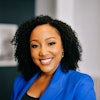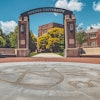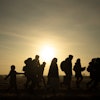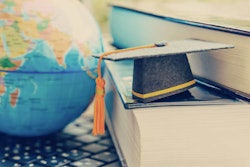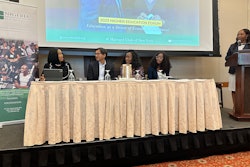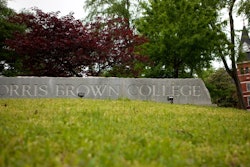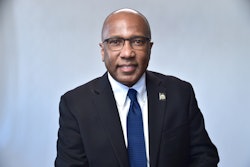ROCKVILLE, Md. – Alan November says when he used to teach students in Lexington, Mass., about the cause of the American Revolution, he always subscribed to the view that the revolt was spurred by the issue of taxation without representation.
But after November got exposed to how British schools teach that the American revolt was prompted by the American colonists’ desire to continue the slave trade in North America, November said he realized that he was promoting a one-sided view of history.
“I’ll never do that again,” November said of his old teaching habits. November made his remarks during a presentation titled “Light-Speed Technology for the Global Classroom” at the annual Asia Society: Partnership for Global Learning conference held here recently.
Among other things, November – an education technology expert – shared how American students who consider themselves tech-savvy could not meet his challenge to use the World Wide Web to find out what British schools teach about the American Revolution. That is, he said, until he apprised them of how to do a search using the “.UK” country code and a special search term for schools to get web-based information originating from schools in the United Kingdom.
“I asked them if they knew how to use Google and they laughed at me,” November said. But when he showed them that there is more to the search engine than they thought, especially the role that a country code plays in filtering out certain information, their laughter gradually lessened, November said.
November’s talk represents just one of the many lessons offered at the Asia Society conference, which drew about 450 educators from throughout the country. Although most of the attendees were K-12 schoolteachers, organizers say a distinct purpose of the event was to get K-12 educators better prepared to produce students who can exhibit the kind of global thinking that is desirable in higher education.
“What we’re trying to do here is prepare students to be ready for college but also to be ready for the world in the same way that college prepares students to be ready for the world,” said Dr. Anthony Jackson, vice president of education for the Asia Society Partnership for Global Learning. “That kind of training needs to happen much earlier.”
Institutions of higher education have a key role to play in getting teachers to think more globally, Jackson and others at the conference said.
One of the best ways for colleges and universities to produce more globally aware teachers is to provide opportunities for teachers to see the world, said Natalie Arsenault, outreach director at Teresa Lozano Long Institute of Latin American Studies at the University of Texas.
“We all know when you travel to a place, you know it better, you teach it better,” Arsenault said during a conference workshop titled “University Resources to Support K-12 Global Learning.”
The workshop emphasized the role that programs such as the Fulbright-Hays Seminars Abroad play in helping teachers improve their understanding and knowledge of peoples and cultures from other countries.
As an example, Arsenault related the experience of a Massachusetts world history teacher who visited Mexico and Peru to develop a curriculum called “Complicating Conquests.” The teacher seeks to demonstrate that conquest is a “dynamic process,” which results in the negotiation and hybridization of culture and “is not just about monolithic domination of one group over another.”
Early maps served as a prime example, Arsenault said, with some of the maps being influenced by aspects of both Spanish and indigenous culture, as evidenced in symbols from the indigenous culture that were used on maps.
Maya Soetoro-Ng, professor at the University of Hawaii College Education and President Barack Obama’s sister, had a similar message for conferees that she sent via video after she could not make it to the conference.
“I am sad when I see social studies teachers teaching about culture as something that is unchanged, instead of taking a look at hybridization and the ways in which cultures intersect,” Soetoro-Ng said during a talk titled “Teaching the Interconnectedness of Global Understanding.”
While much of the conference focused on ways to broaden both students’ and educators’ horizons and to incorporate technology into the classroom, one of the themes that emerged among conference speakers was the need to teach more empathy.
Perhaps the presentation that best accomplished this end was one called “The Power of Simulations: Student-Led Landmine Simulation.” Students from the International School of the Americas had conference-goers walk a virtual minefield in order to get a better sense of the ones in various regions of the world where millions of people have been maimed or killed by the weight-triggered explosive devices.
The exercise duplicated one where as students they walk across an area and pick up a piece of paper that represents safe passage or being maimed or killed by a land mine. Those who had been “killed” had to sit down and remain silent while others kept walking.
“The most impactful thing was to see people I know dead or affected, and the people who were alive I felt even disconnected from them because I was maimed,” Christa Harrison recounted of the land mine experience.
But it’s also essential to discuss the experience afterward, Harrison said.
“You can’t just do a simulation and not talk about it,” Harrison said. “You have to share ideas and reflections and talk about how this is actually happening in other places around the world.”


